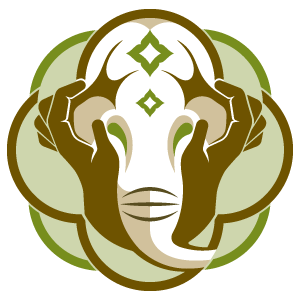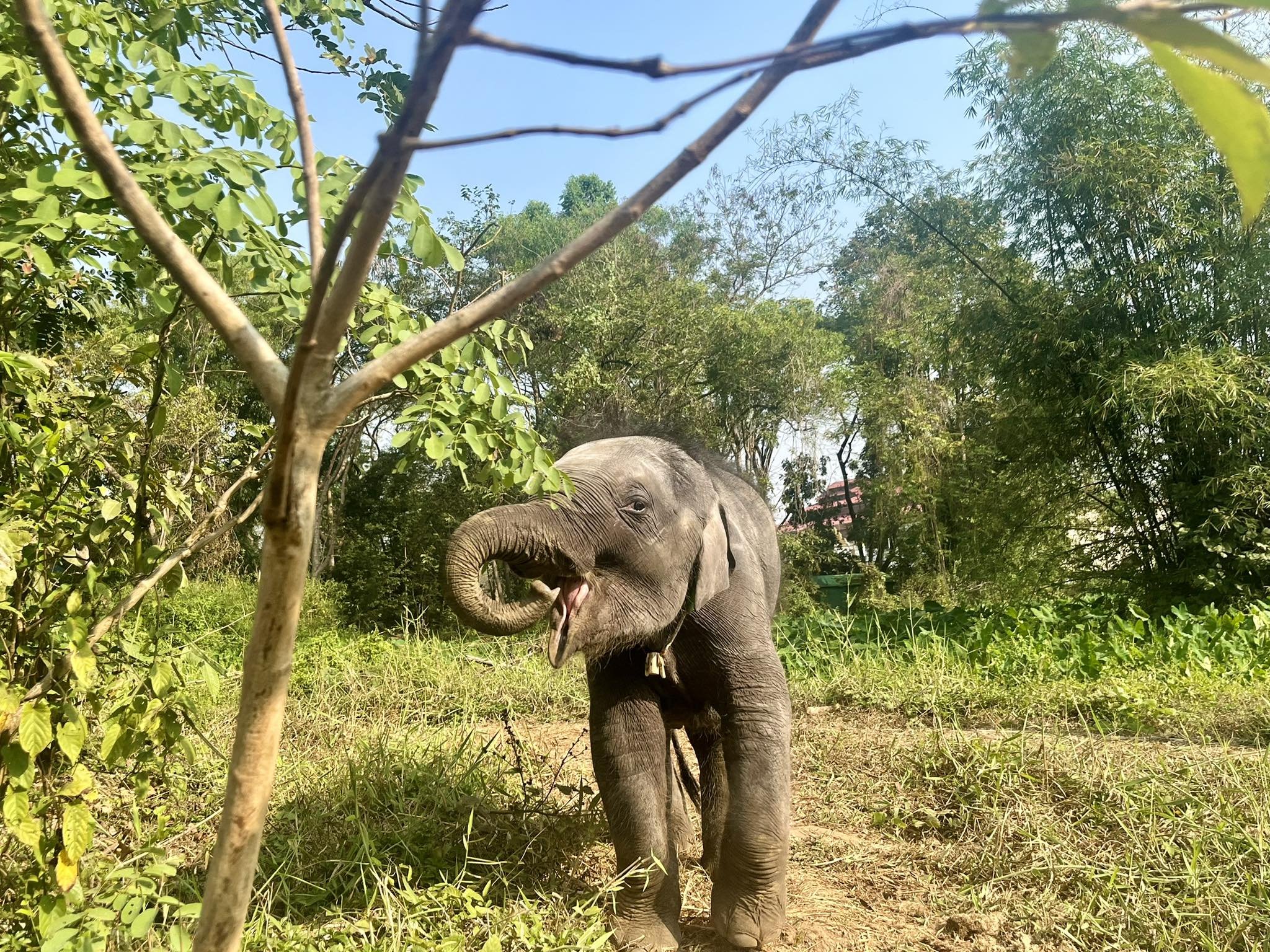For a short month, the Chiang Mai University Mobile Vet Clinic was busy with several cases. Interestingly, 45% of the cases last month were due to eye concerns. There were also a handful of wounds which needed tending, a couple of foot injuries and a nursing issue.
Upon arrival at their first case, the team found the elephant standing calmly in front of tourists, eating, and appearing generally fine. However, her left eye exhibited excessive tearing and squinting. A visible wooden stick was embedded at the outer corner of the eye, and the third eyelid was swollen and protruding, obscuring the eyeball. To the vet’s surprise, the stick was larger and longer than expected. Fortunately, there was no bleeding after extraction. The eye was rinsed with a saline solution and treated with antibiotic eye drops. Once the pain subsided, a hole-like wound was observed. Given the risk of deeper injury, the cow was transferred to hospital for further diagnostic imaging and intensive care. Thankfully, the eye globe structure remained unharmed, and her vision was preserved.
The surprisingly large stick removed the elephant’s eye
At the second case, the mahout reported an adult female elephant experiencing excessive tearing for a couple of days and noted that she had been playing in the dirt frequently. In response, they began cleaning her eye with clean water more frequently. Upon examination, the veterinarian observed a whitish spot on the cornea, diagnosing a superficial corneal ulcer. After demonstrating the proper application of topical eye drops to the mahout, recommending administration four times daily, and an anti-inflammatory drug was provided for three consecutive days the team also advised keeping the elephant in the shade to enhance her comfort and support healing. At the follow-up visit two weeks later, her eye had cleared completely.
Eye with white corneal ulcer
The other two cases of lacrimation (excessive tearing) were similar cases in two very different patients. One case was that of an adult female and the other a two-month-old calf. In both cases, fluorescein staining was performed, and both results were negative, confirming no corneal damage and mahouts at both locations were instructed in methods to help rinse and clean the eyes of their elephants, especially after playing in the mud and dirt.
The young calf tearing consistently
In addition to the other cases the CMU Mobile Vet Clinic was requested to conduct a health examination, with a focus on foot care, for an adult male tusker elephant who had sustained injuries from a mine explosion 10 years ago. He had chronic wounds on both hind limbs and was recently rescued and transported from a border area to a camp in Mae Rim. In terms of gait analysis, he was able to bear weight on all four limbs. The mahout led him into the river for a bath before the examination. During the assessment, they found a severely open wound on the left hind footpad. The right hind foot had an open wound on the footpad and an abscess at the nail base, which extended deep into the foot. Both wounds emitted a strong odor. Due to the lack of appropriate facilities for foot trimming and intensive foot care, and since the elephant was still in the process of training and familiarizing himself with the mahout, the team focused on wound management and trained the mahout team on proper wound care techniques suitable for the current situation. The wound care process involved cleaning the affected areas with a chlorhexidine solution, brushing out debris and dirt, and repeatedly rinsing with saline and povidone-iodine solution. After drying the wounds with gauze, an antibiotic ointment was then applied.
Tusker favoring his right rear foot
Abscesses on the rear feet of the tusker with old mine wounds
We are so grateful for the continuing efforts of the Chiang Mai University Mobile Vet Clinic Team! Help AES continue to support them as they strive to make a better future for Thai elephants, by donating TODAY at www.asianelephantsupport.org/donate































































